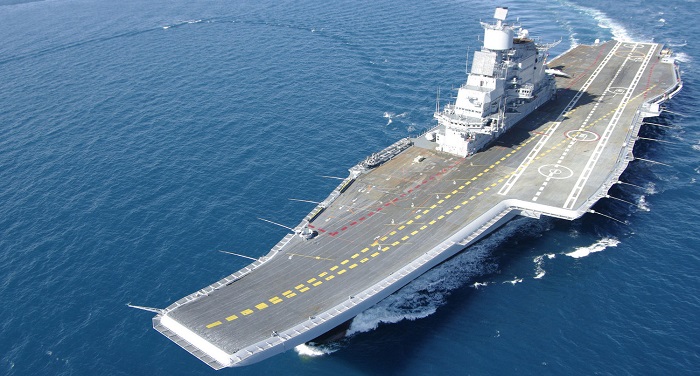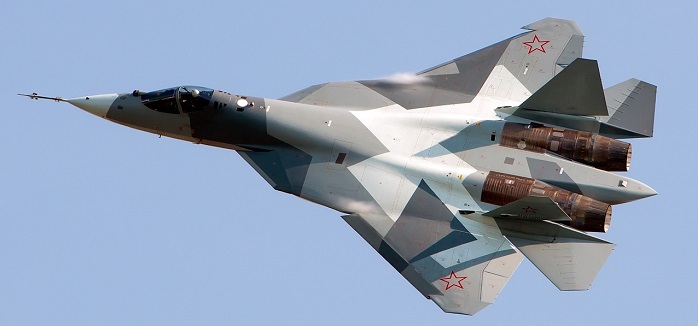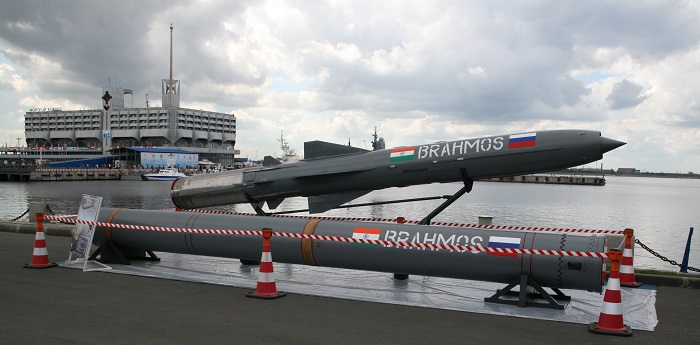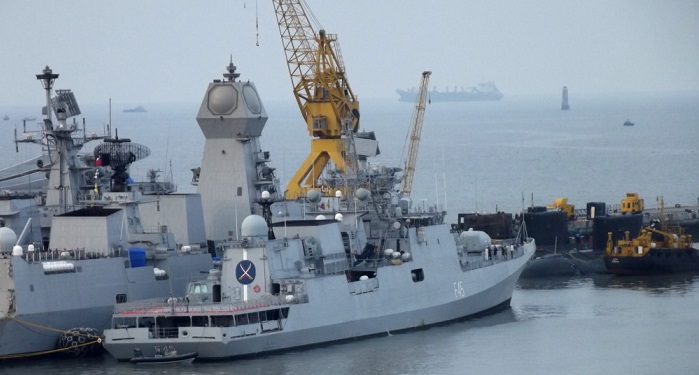Five Indian Weapons of War China Should Fear

India's rising military might could cause China severe angst if the unthinkable ever occurred.
India and China have been neighbors for thousands of years, and have traditionally enjoyed good relations. Only recently in their mutual history have the two sides come to blows. Despite that long peaceful history, the brief 1962 border war and subsequent disagreements over territory have chilled relations between the two.
China’s recent push to acquire what it considers historically Chinese territory has not been lost on India, and New Delhi has been stepping up modernization of its armed forces. Fortunately, the terrain on their mutual border makes a land war between the two a difficult—but not impossible—proposition.
Although China soundly beat India in the 1962 war, the armies of both sides are now more evenly matched and the result could easily be a stalemate.
If India and China were to come to blows, the real war would be fought at sea. China imports large amounts of foreign oil, and two thirds of that must pass through the Indian Ocean. India sits astride the sea lanes providing China with energy. In the event of increased tensions the Indian Navy could impose essentially a blockade on China of vital shipping from the Persian Gulf and Africa.
Such a move could force the People’s Liberation Army Navy (PLAN) to travel thousands of miles around the southern end of Asia, into the Indian Ocean to confront Indian naval forces. The fate of the Chinese economy would be in the balance and could escalate to include many different domains of warfare. With that in mind, here our five weapons of such a potential conflict that China would fear most.
VIkramaditya Aircraft Carrier

India has operated aircraft carriers for more than fifty years, starting in 1961 with the carrier INS Vikrant. Commissioned in 2013, INS VIkramaditya is the latest and most powerful in a long line of Indian carriers.
The carrier was originally built for the Soviet Navy as the Baku. The original ship was an anti-submarine warfare carrier with the armament of a cruiser, including two 100mm deck guns, a staggering 192 SA-N-9 surface to air missiles and 12 giant SS-N-12 Sandbox anti-ship missiles.
Mothballed by the Russian Navy in 1996, Baku was purchased by India in 2004. The updated design deleted all cruiser armament, replacing it with a full-length angled flight deck and a ski jump to assist aircraft takeoffs. Vikramaditya’s air wing is expected to consist of 30 MiG-29K or Tejas fighters and 12 helicopters.
Vikramaditya’s refurbishment has been beset with problems. The ship was to be completed in 2008, but the shipyard encountered difficulties and delivery was pushed back five years. Vikramaditya currently is without active air defenses, relying on passive defenses such as chaff and flares. The Barak-8 short-range air defense system, a joint program by Israel and India, is behind schedule and the AK-630 close-in weapon systems are scheduled to be installed mid-2015.
China fears Vikramaditya because the carrier could lead a blockade of Chinese shipping, its aircraft increasing the Indian fleet’s radius of action. Vikramaditya could also contribute offensive air power against any Chinese fleet sortied to break the blockade.
Fifth Generation Fighter Aircraft (FGFA)

India’s first fifth generation fighter, FGFA is a collaboration between Hindustan Aeronautics Limited and the Russian Sukhoi corporation. A derivative of the Russian PAK-FA fighter program, FGFA will mark a quantum leap in Indian Air Force capabilities and will theoretically give India an aircraft in the same class as the American F-22 and Chinese J-20.
FGFA is a large multirole aircraft capable of both air to air and air to ground combat. The fighter will have all the features typical of fifth generation fighters, including a high level of maneuverability, stealth, the ability to supercruise above Mach 1, advanced fire control and an active electronically scanned array radar system.
FGFA will have large internal storage bays capable of carrying guided weapons, including up to six radar-guided missiles. Air to air missile armament will likely be the locally produced Astra, a radar-guided missile under development with a range of up to 100 kilometers. FGFA will also reportedly be capable of carrying the air-launched variant of the BrahMos supersonic cruise missile, which can attack targets on both land and sea.
India will invest a total of $25 billion dollars in the joint development project, and in return will receive up to 250 fighters. Deliveries are set to begin in 2022.
All of that having been said, FGFA is reportedly having development issues, with Indian officials complaining that the development aircraft has “shortfalls... in terms of performance and other technical features.” Many of these shortfalls are temporary but others, such as the complaint that the plane’s stealthiness is poorly engineered, could represent real obstacles in achieving all design goals.
China fears the FGFA because it would directly compete with the Chinese J-20 fighter. Despite the reported problems, the FGFA’s pedigree includes the legendary Sukhoi aircraft design bureau, with more than 70 years experience in fighter design. The J-20, by contrast, is apparently a wholly indigenous design with little or no foreign expertise. If FGFA turns out to be successful, it will allow India to match advances in Chinese airpower for the foreseeable future.
BrahMos Anti-Ship Missile

A joint Indian-Russian project, BrahMos is a short-range supersonic cruise missile capable of being launched from land, air, and both surface and subsurface ships. Brahmos is one of the most advanced missiles in the world, capable of hitting targets on land and at sea with precision.
BrahMos was developed jointly by India’s Defence Research and Development Organization (DRDO) and Russia’s NPO Mashinostroyeniya. The name itself is a mashup of two Indian and Russian rivers, the Brahmaputra and the Moskva. First flight was in 2001, and three versions—ship, submarine and land—are now operational. The air version, reengineered to be carried by aircraft, is expected to be tested by the end of 2014.
Brahmos is a two stage missile, the first being a booster rocket and the second a ramjet that propels Brahmos to speeds of up to Mach 3. In anti-ship mode the missile homes in just 3-4 meters above the wavetops, giving defenders minimal reaction time. The missile packs a 440 to 660 pound penetrating high explosive warhead. Depending on the variant, the missile has a range of 186 to 310 miles.
The multiplicity of launch platforms means that the Brahmos threat could come from any direction and must be countered with multiple defenses: for example, in order to counter sub-launched Brahmos an enemy would have to invest in both anti-submarine warfare and defense against high-speed missiles. Factor in delivery systems such as the FGFA fighter in the air, ships at sea and trucks on land and Brahmos could come from anywhere.
Brahmos represents a substantial missile threat to the People’s Liberation Army and People’s Liberation Army Navy. The missile’s high speed means that China’s unproven air defenses—both on the ground and at sea—will have mere seconds to respond to a Brahmos attack.
Kolkata-Class Destroyer

The Kolkata class is India’s latest guided missile destroyer design. Fast and stealthy, with an advanced sensor suite and an array of potent air, land and sea weapons, the Kolkata class would be a formidable ship in any navy.
The Kolkata class destroyers are true multipurpose destroyers, capable of providing protection to India’s aircraft carriers or operating independently. The primary radar system, an actively scanned array radar provided by Israeli Aircraft Industries, is reportedly comparable to the American Aegis radar system. The radar is capable of detecting contacts in the air and at sea and provides guidance to radar-guided missiles. The Kolkatas will also feature a bow mounted and towed sonar arrays for detecting submarines.
Armament will be considerable, with vertical launch cells for up to 64 air defense missiles. The missiles will be a mix of short-range Barak 1 and medium range Barak 8 radar-guided surface to air missiles, capable of point and area defense, respectively. Such defensive missile armament will allow it to provide air defense for carrier battle groups, surface action groups, amphibious groups and shipping convoys.
The Kolkatas will pack the heaviest surface-to-surface firepower of any destroyer in any navy, with each ship carrying 16 BrahMos supersonic cruise missiles. Rounding out the ship’s armament is a 76mm gun, four AK-630 close-in weapons systems, anti-submarine rockets and torpedoes, and two embarked helicopters with a hangar.
Three Kolkata destroyers are to be built, with the first of class expected to be commissioned this year. A follow-on class of four destroyers with improved stealth characteristics is already being planned.
China would fear the Kolkata class because it would provide air defense for ships such as the Vikramaditya. Armed with 16 BrahMos missiles, the Kolkatas could also operate independently as commerce raiders, threatening Chinese shipping.
Arihant-Class Ballistic-Missile Submarine

Although India has maintained a nuclear arsenal for decades, it has lacked a credible second-strike countervalue capability. The ability to threaten enemy strategic assets and even cities, an insurance policy against surprise nuclear attack, has eluded India. INS Arihant (“Destroyer of Enemies”) is the first real step toward fixing that problem. India is only the sixth country in the world to develop an undersea nuclear deterrent.
INS Arihant is India’s first ballistic missile submarine, specifically designed to launch nuclear missiles. Arihant will carry twelve K-15 short-range nuclear missiles or four K-4 intermediate range nuclear missiles. K-15 missiles, with their 700-kilometer range, are incapable of reaching China from the Indian Ocean. K-15 missiles, with their 3,500-kilometer range can reach as far as Beijing. As far as India is concerned, that is probably far enough.
Arihant incorporates aspects of Russian submarine design. It is both India’s first indigenously built ballistic-missile submarine and first indigenously built nuclear submarine. In another first, the 83MW reactor powering the ship is India’s first shipboard nuclear reactor. Russian shipbuilders lent extensive assistance to Indian shipbuilders, and Russian experts assisted the Bhabha Atomic Research Center in design of the reactor.
China should not fear the Arihant per se—India has a “no first use” nuclear policy, meaning it would not be the first to launch nuclear missiles. Even if that policy were to change, a successful Arihant class would only mean about twelve nuclear missiles at sea. Still, those twelve missiles represent the capability to do the unthinkable, and despite stated policy that such a potential threat be taken lightly.
Arihant is nearing sea trials. Three submarines are reportedly planned.
Image: Wikimedia Commons
You May Be Interested IN